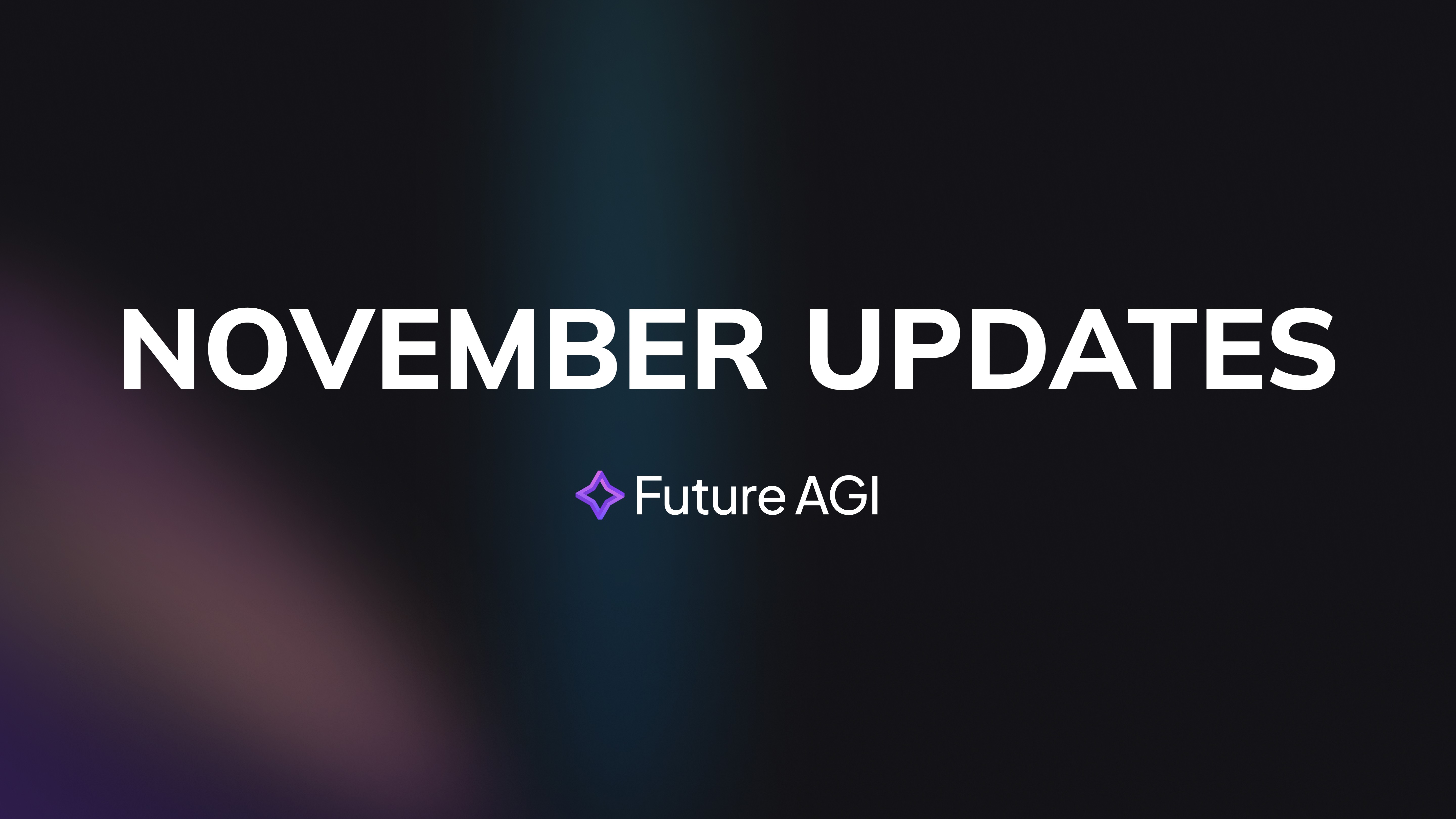Introduction
In the fast-evolving world of AI, you must, as a result, keep tabs on the LLM leaderboard to stay ahead of the game. Consequently, evaluating the performance of large language models (LLMs) is essential, especially when they are part of a cutting-edge application. The leaderboard of LLMs provides transparency, competitiveness, and standardization in benchmarking AI. In turn, it gives you insight into strengths and weaknesses, as well as how LLMs will perform in the real world.
What is an LLM Leaderboard?
LLM leaderboards are scorecards used to evaluate machine learning models in natural language processing based on diverse benchmarks. In particular, these leaderboards—such as OpenAI Evals and Hugging Face's Open LLM Leaderboard—are the first place developers, researchers, or businesses check to find top-performing AI models. By doing so, stakeholders can monitor innovation, track progress, and make informed model selection decisions.

Figure 1: A ranking table showcasing top LLMs
Key Metrics Used to Evaluate LLMs
The backbone of any LLM leaderboard is its evaluation metrics. Let’s break down the core criteria:
Accuracy and Performance
Models are scored based on benchmarks such as classification, sentiment analysis, summarization, etc. These benchmarks test the system’s ability to respond correctly and accurately to a wide variety of common language tasks. Put simply, higher accuracy means the model can understand and respond to your inputs effectively.
Natural Language Understanding (NLU)
Datasets such as GLUE and SuperGLUE measure an LLM’s understanding of human language and its processing. These tests usually cover a range of areas, such as reading comprehension and sentence similarity. As a result, high NLU scores indicate that models can understand context, meaning, and linguistic nuances, including implications and subtleties.
Generative Capabilities
Additionally, text coherence, creativity, and relevance are tested through generative tasks. This process includes not only producing well-structured, engaging responses but also ensuring they are contextually appropriate—whether for essays, stories, or conversational replies. Generative strength, therefore, reflects the model's ability to go beyond factual accuracy and deliver compelling, human-like text.
Reasoning and Problem-Solving
Moreover, we use logical and mathematical reasoning benchmarks to evaluate the models' problem-solving abilities. The tasks included here could involve answering math questions and logic puzzle-type problems. A strong ability to do well on these tests shows that the model is intelligent and capable of complex thinking.
Multimodal Capabilities
With that being said, the increasing capabilities of AI systems have led to competitions that now engage models capable of associating text with images, audio, and other media. Apps like visual question answering, picture captioning, and voice assistants depend on this. Hence, the ability to mix data types—such as text plus images or text plus audio—is a significant step forward.
Domain-Specific Performance
Industry-focused exams assess the performance of LLMs in areas such as medicine, law, and finance. These benchmarks, accordingly, evaluate how well the model can understand jargon, apply domain-specific reasoning, and, more importantly, provide insights that are both helpful and correct for industry professionals.
Check out this blog to understand Future AGI's state-of-the-art proprietary evaluation metrics for your GenAI applications.
Evaluating User-Centric Factors
In addition to raw performance, a robust LLM leaderboard accounts for real-world usability:
Latency and Speed
Such accuracy is crucial for ongoing tasks like chatbots and virtual assistants. A model that provides accurate answers but takes several seconds to respond can be frustrating. Thus, low-latency response is essential for high-demand environments where even milliseconds count.
Scalability
Is the model capable of efficiently managing high traffic? For businesses leveraging AI solutions, it is equally vital that the models do not degrade in performance over time. Whether due to thousands of users or heavy data usage, they must consistently maintain reliability.
Cost-Efficiency
Resource consumption versus output quality is, in essence, a crucial balance for AI deployment. While powerful models deliver top-tier results, they often demand significant computational resources. On the other hand, efficient LLMs provide high-quality outputs while keeping infrastructure and operational expenses reasonable. This, in turn, makes AI more accessible to organizations of all sizes.
Ease of Integration
Developer adoption is significantly influenced by API accessibility and framework compatibility. A model that is easy to integrate with existing tech stacks—especially when it is well-documented and supported by developer-friendly tools—encourages faster deployment, iterative improvements, and broader adoption in various industries.
Ethical Considerations and Fairness in Modern LLM Leaderboards
Modern LLM leaderboards aren’t just about performance; instead, they emphasize ethical AI development to ensure responsible and fair AI usage.
(a) Bias Detection: It is necessary to test models for bias on gender, race, and socioeconomic status. AI software can unintentionally reinforce bias already present in data. As such, leaderboards aim to provide unbiased results that support fair treatment. They measure a model’s capacity to provide fair, inclusive responses without bias across diverse populations.
(b) Transparency and Explainability: Clear model outputs build trust and ensure compliance with ethical AI principles. AI systems should not function as "black boxes"—users need to understand why a model made a specific decision or produced a particular response. Consequently, greater transparency aids in accountability and promotes responsible AI development.
(c) Alignment with Ethical Guidelines: Models are increasingly assessed on their ability to produce fair and responsible outputs. Ethical AI should align with principles of fairness, privacy, and truthfulness. Therefore, evaluations now consider whether a model generates harmful, misleading, or unethical content.
Popular Benchmarks Used in LLM Evaluation
To understand how models climb the LLM leaderboard, consider the benchmark datasets that drive these rankings:
GPT-4 Evaluation
A gold standard for natural language generation, often used as a reference point to measure fluency, coherence, and contextual accuracy. This evaluation, as a result, assesses how well a model can produce human-like responses, handle complex instructions, and, in addition, generate creative or informative text. It’s considered one of the most reliable ways, therefore, to gauge a model’s overall conversational capabilities.
MMLU (Massive Multitask Language Understanding)
This benchmark tests reasoning skills and knowledge retention in fields like history, science, and math, as well as edge cases such as law or ethics. In testing both factual recall and critical thinking, MMLU, accordingly, shows the model’s generalization across domains. Moreover, it reveals the model’s ability to handle complex and nuanced topics. This attribute is a crucial factor to determine the versatility and intelligence of the model.
BigBench
ing models to delve deeper than mere words. In some cases, questions give you clues to help you answer, while in others, they rely on your common sense and logic. Consequently, winning BigBench often hints at a model's ability to think abstractly and solve creatively.
These datasets power the evaluation engines behind trusted tools for evaluating language models, thus helping researchers track progress and identify areas for improvement.
Challenges in Evaluating LLMs
Lack of Standardisation
Leaderboards often use different metrics, for example, accuracy, perplexity, BLEU scores, or human evaluation. Each model employs unique comparison criteria, thereby complicating direct comparisons. This fragmentation can result in confusion over which model truly outperforms others in a specific domain or task, as contenders may be optimized for diverse benchmarks. A common set of metrics could help solve this problem, but language tasks are sufficiently diverse that this is a tough goal.
Subjective Metrics
Additionally, measures like creativity, coherence, and contextual relevance are critical in assessing large language models. However, they are also difficult to quantify objectively. Automated scoring is possible for metrics like syntax and factual correctness, but it is not possible to gauge natural, engaging, and contextual relevance. So, they often require human evaluations, which can introduce variations and bias in the leaderboard rankings. There’s an ongoing issue of how to develop better and more consistent ways to measure human evaluations.
Keeping Up-to-Date
Every day, the datasets, applications, and real-world use cases around natural language processing go through changes. Benchmarks that were considered state-of-the-art a year ago have become obsolete quite easily. Models that do well on their static set of benchmarks do not generalize well. Therefore, we need to keep our test sets and metrics up to date—and that doesn’t come easily. It requires a lot of time and effort from the community.
How LLM Leaderboards Influence the Industry
(a) Model Selection:
Leaderboard rankings are the primary means for businesses and developers to pick up models. These rankings give a quick and data-driven way to compare different models that can perform language comprehension, generation, and accuracy. Thus, by using these leaderboards, companies can save time and reduce the risk of testing several models, as they will be able to select a good model with confidence.
(b) Competitive Innovation:
This is driving rapid advancements in AI capabilities. The competitive nature of these rankings, consequently, motivates teams to refine architectures, optimize training, and, as a result, seek new approaches. This race for the top not only benefits individual companies but also, ultimately, accelerates industry-wide innovation. Consequently, it leads to the development of more powerful and efficient language models.
(c) Industry Standards:
Consistent, transparent benchmarking helps establish performance baselines and best practices. Models that allow for evaluation—but not just any type of evaluation—provide leaderboards. Claims to superiority must be backed by reproducible evaluations. Over time, trust and accountability will build to foster responsible development in the AI community, enabling users to identify models that will meet their technical and ethical requirements.
9. Future of LLM Evaluation
The next frontier for LLM leaderboards involves several exciting advancements that go beyond traditional accuracy metrics. Let’s break them down:
Multimodal Benchmarks
As AI models increasingly incorporate text, images, audio, video, and other inputs, new evaluation tools that can test performance across modalities are being developed. For instance, a benchmark that evaluates both text comprehension and creativity would be required. Furthermore, this is essential for a video-producing model that analyzes video and generates text. Datasets such as VQA and TextCaps are early examples of this approach. Moreover, other benchmarks will likely support models that assist visually impaired users or enhance gaming experiences.
Holistic Metrics
Traditional benchmarks often focus on accuracy, perplexity, or BLEU scores. However, the future of evaluation takes a broader view. Metrics like environmental impact (e.g., carbon emissions) and long-term usability (performance after updates or shifts) are gaining importance. In fact, some leaderboards now feature the Green AI Score to track efficiency. This push toward sustainability and robustness reflects the growing belief that the best models aren’t just the smartest—but also the most responsible.
Real-World Applications
LLM leaderboards are evolving to measure how models perform in dynamic, production-level environments, rather than just on static test sets. They now address vague questions, open-ended prompts, and adaptability to real-time tasks and events. For instance, we can test OpenAI's GPT models by generating useful, non-biased outputs in scenarios such as customer care or, alternatively, legal research. Real-world evaluation, as a result, bridges the gap between theoretical performance and practical utility—ensuring models are truly deployment-ready.
Conclusion
LLM leaderboards are transforming how we evaluate and benchmark AI models. These platforms highlight what makes a language model superior, revealing insights through proprietary metrics, ethical considerations, and user-centric factors. To stay competitive, regularly follow benchmark updates, track AI performance metrics, and explore advanced evaluation tools. Doing so will ensure you're always aligned with the best in the industry.
Comparing models has always been tricky. However, Future AGI is changing the landscape with its new Compare Data capability. Try Future AGI's app today to experience the most advanced tools and features, making the model-building process efficient.
FAQs













